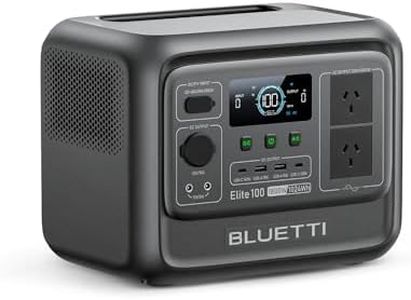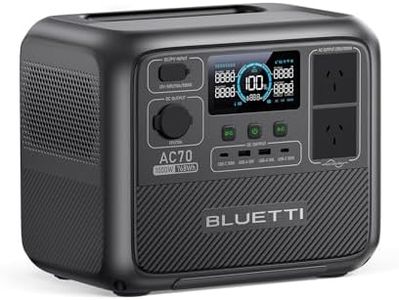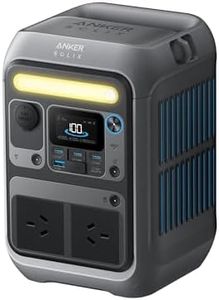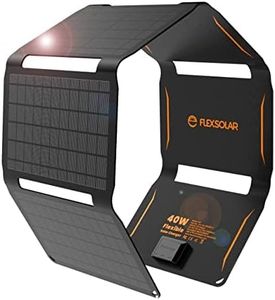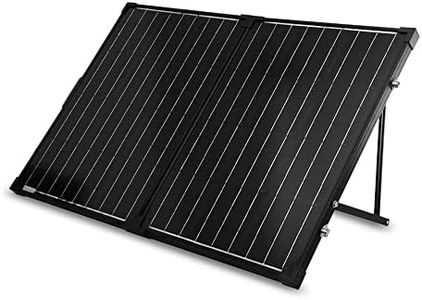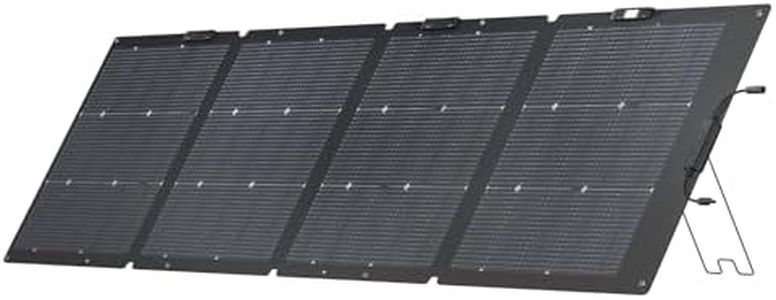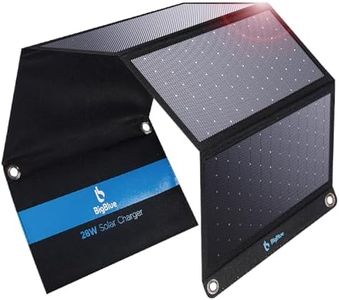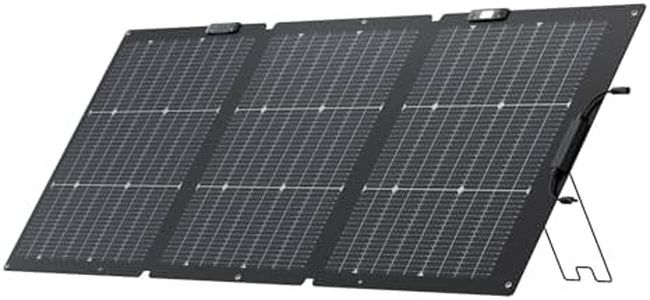We Use CookiesWe use cookies to enhance the security, performance,
functionality and for analytical and promotional activities. By continuing to browse this site you
are agreeing to our privacy policy
10 Best Solar Portable Chargers
From leading brands and best sellers available on the web.By clicking on a link to a third party's website, log data is shared with that third party.
Buying Guide for the Best Solar Portable Chargers
Choosing a solar portable charger can be a smart decision if you spend time outdoors, travel, or simply want an eco-friendly backup for keeping your devices powered. Since these chargers use sunlight to generate energy, their performance depends on both their design and your intended usage. The key to finding the right fit is understanding your typical charging needs, how often and where you'll use the charger, and how portable you want it to be. Familiarizing yourself with the main features will help you make a confident and suitable choice.Solar Panel Output (Wattage)This specification measures how much power the solar panel can generate, usually in watts (W). Higher wattage panels can convert more sunlight into energy at a faster rate, which is particularly important if you plan to charge multiple devices or need quick charging. Solar chargers typically range from under 10W (good for slowly charging small devices like phones) to over 25W (better for faster charging or for tablets and other larger devices). If you only need to top off a phone while hiking, lower output models might suffice. If you want to charge several devices simultaneously or use power-hungry gadgets, choose a higher wattage panel.
Battery Capacity (mAh)Many solar chargers come with a built-in battery that stores collected energy for later use. This is measured in milliamp-hours (mAh). A higher mAh rating means the battery can store more energy. For example, a 10,000mAh battery can charge a typical smartphone about two times. If you mainly want to charge your device directly from sunlight, internal battery size matters less. But if you want the flexibility to charge at night or on cloudy days, opt for a charger with a larger built-in battery.
Number and Type of Output PortsThis refers to how many devices you can charge at once and what type of cables you can use (like USB-A, USB-C, or micro-USB). Some chargers offer a single port, while others provide multiple ports for charging several devices simultaneously. Think about how many gadgets you usually carry—if you often travel with a friend or bring multiple devices, having more ports will be convenient. Check for compatibility with your devices’ charging cables to avoid surprises.
Portability and WeightThe size and weight of the charger make a big difference, especially if you plan to carry it in a backpack or suitcase. Smaller models are easier to carry around but may provide less charging power or fewer features. Larger chargers might be heavier, but they often have more powerful panels or larger batteries. Consider your activities: if you’re hiking or camping, a lightweight model is ideal. If space and weight are less of an issue, a bigger charger could offer more convenience and power.
Charging SpeedCharging speed is influenced by both the solar panel output and the electronics inside the charger. Some models support faster charging standards, which can significantly reduce the time needed to power up your devices. If you’re usually in a hurry or want your devices ready quickly, prioritize chargers labeled as ‘fast charging’ or those that provide higher current per port (measured in amps). For slow, steady charging during long trips, this may be less important.
Durability and Weather ResistanceOutdoor use requires a charger that can handle sun, rain, dust, and the occasional drop. Many solar portable chargers are made with rugged materials and have some degree of water and dust resistance (look for IP ratings such as IPX4 or IP67). If you’ll mainly use the charger at home or in mild conditions, durability is less of a concern. For outdoor adventures or travel, prioritize a sturdy and weather-resistant model for reliability.
